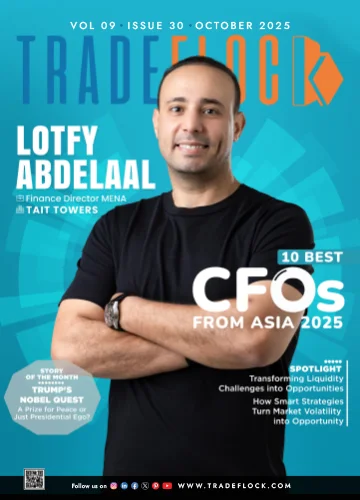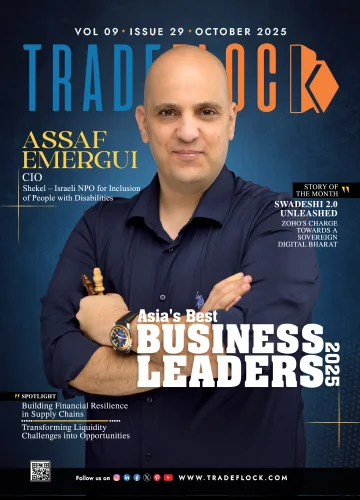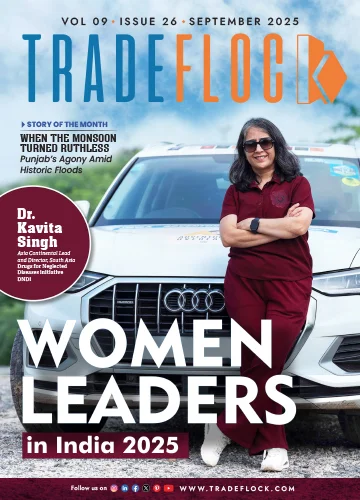
Pioneering Change in Modern Retail Through Visionary Leadership
Kumar Nitesh
CEO


Pioneering Change in Modern Retail Through Visionary Leadership
Kumar Nitesh
CEO
Ajio Business/Trends Footwear/ Lee Cooper/Catwalk
Retail isn’t just about selling products—it’s about designing ecosystems of behaviour. As technology compresses the distance between discovery and decision, and as consumers blur the lines between online and offline, the real challenge isn’t growth — it’s coherence. In this landscape, the leaders who matter most aren’t those who react quickly, but those who see clearly. While many chase growth through trends and tech, Kumar Nitesh has built a career mastering something far more elusive: relevance that endures. Over two decades, he has shaped retail strategies across India, Southeast Asia, and the Gulf by focusing not on scale alone, but on what sustains it. Over two decades, he has shaped retail strategies across India, Southeast Asia, and the Gulf by focusing not on scale alone, but on what sustains it. At Bata, he turned a $6M loss into a $50M profit and tripled revenues by tightening fundamentals. At Apparel Group MENA, he accelerated the rise of brands like Dune London, DSW, Naturalizer, Hush Puppies, Herschel ACO, Birkenstock and Crocs. Now, as CEO of AJIO Business & Trends Footwear, he’s creating India’s next-gen retail engine through franchise-first models, digital integration, and a “B2B2C flywheel.” With prominent national brands, He’s building the most agile engine in fashion and footwear retail. His leadership rests on a clear, uncompromising philosophy:
Build businesses that scale with purpose, serve with relevance, and last beyond market cycles
In this exclusive conversation with TradeFlock, Kumar Nitesh discusses his journey across geographies, the hard-earned lessons he’s learned, and the future he’s shaping.
How have your international experiences across India, MENA, and Southeast Asia shaped your leadership as a CEO?
Cross-cultural leadership doesn’t just build adaptability but deepens empathy. Working in Bangladesh, Thailand, the Middle East, and across India, I understood that while retail formats may be global, consumer triggers are always local. I learned to listen more closely, to observe how people shop, what fuels aspiration, and how trust is earned. We localized Western brands in the Gulf with subtle but powerful regional cues. In Southeast Asia, I learned to scale with simplicity, cutting through complexity to meet the market where it is. These experiences taught me that the CEO’s role is not to replicate success, but to reinterpret it contextually, with humility and insight.
Retail is intensely operational. How do you avoid becoming a super-operator instead of a strategic CEO?
It’s easy to get caught up in the operational grind, especially in Indian retail. But my compass is clarity. I believe in building systems that self-correct, not in firefighting every day. I focus on empowering cross-functional KPIs, creating visibility through dashboards, and stepping back just enough to spot white spaces. I deliberately spend 30% of my time on what’s next—new formats, emerging segments, and digital adjacencies. That balance between running and reinventing the business is what separates an operator from a strategic CEO.
What strategies are vital for bridging India’s organised– unorganised retail divide?
I don’t think the future is to erase the unorganised— it’s to upgrade it. In Tier 2 to 4 towns, value retail proves this every day. What works is aspirational affordability—offering branded experiences with neighbourhood proximity. “The bridge won’t be built by technology or capital alone, but by trust, training, and partnerships that uplift the ecosystem.” The key is a franchise-first model that empowers local entrepreneurs while giving them access to systems, supply chains, and scale. That’s how we build something inclusive and sustainable.
What’s the first strategic lens you apply when building a billion-rupee business—and what do you intentionally ignore?
I always begin with a single question: “Where’s the consumer friction?” Whether you’re building from scratch or reviving a legacy brand, value is created where real problems are solved. I obsessively focus on front-end execution— store economics, assortment logic, service gaps— because that’s where the business breathes. But in the early stages, I deliberately ignored vanity metrics. You don’t chase scale—you earn it. Instead, I zero in on unit economics, operating leverage, and consumer stickiness. If the core is strong and the fundamentals hold, scale becomes a consequence, not a goal.
What does operational excellence mean to you as a CEO, and how do you embed it across large retail ecosystems?
I’ve never believed operational excellence is about perfection. For me, it’s about rhythm —predictability with agility. In retail, the real magic happens when discipline meets decentralization. Every store runs as a profit center, and every function owns its metrics. “Data should drive accountability— but only when paired with field immersion.” That’s why I still walk stores and talk to teams. You can’t lead from a dashboard alone. Culture is the real carrier of excellence. When frontliners start thinking like owners, you know you’ve built something that lasts.
What role should CEOs play in reimagining consumer engagement as digital and physical retail converge?
The consumer doesn’t think in channels —they think in experiences. And so should we. Today’s shopper scrolls, clicks, visits—and expects everything to feel like one brand. That’s why I believe CEOs must lead from the lens of lifetime value, not channel. It’s about fusing data, design, and delivery into a seamless, unified story . I call it a B2B2C flywheel—blending B2B, B2C, and franchise flows to serve the consumer holistically. But real convergence isn’t just tech—it’s teams, incentives, and mindset. When that aligns, loyalty stops being earned —it becomes instinctive.












